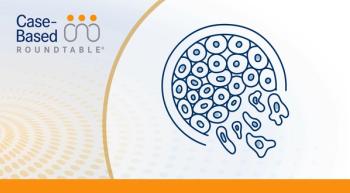
Selecting and Utilizing Anti-BCMA Therapy in Relapsed and Refractory Multiple Myeloma
Nikhil C. Munshi, MD:Before we go into some more details about the CAR [chimeric antigen receptor] T-cell data specifically, I think 1 question might come up. We have 3 BCMA-targeting agents. We have ADCs [antibody-drug conjugates], BiTEs [bispecific T-cell engagers], and CAR T cells. What’s not so clear is how we would think of using them. Do you think one given patient would be better served with one drug versus another drug? I do feel that we should be able to use more than 1 of them, even though they target the same.… What is your view? It’s not a settled issue.
Parameswaran Hari, MD, MRCP:Exactly. So the biggest challenge to CAR T cells is that there is a production time, unless we get third-party allogeneic CAR T cells, which is also very excitingly in development. So they’re not off the shelf, so to speak. So for a person who needs treatment today, or tomorrow, or next week, CAR T-cell therapy may not be available, even in clinical trials right now. For those patients, something off the shelf such as the ADC, or belantamab, or a T-cell engager might prove the answer. And the other thing is the ability to tolerate therapy.
Many centers do CAR T cells very similar to how they do transplant. Although patients older than the transplant age are being given CAR T cells now, we need to have cellular therapy expertise in the center to use it. So it may not become universally available across all centers that treat myeloma in the country, especially in community centers and small towns. So patients may have to travel to get CAR T cells. And the period of toxicity can extend up to a month or sometimes even a little bit longer. And that, again, becomes an issue. On the other hand, most CAR T cells are designed with a 1-and-done approach. And we are, at this point at least, not reporting on studies that give something after the CAR T cells. So that might give a time without disease and without additional treatment, and that may be fantastic for our patients.
Nikhil C. Munshi, MD:But I think there are almost data where patients could be treated with BCMA CAR T-cell therapy and then have received ADC after that and responded.
Parameswaran Hari, MD, MRCP:Absolutely, yes.
Nikhil C. Munshi, MD:So those 2 are quite easy. What I’m not so sure about is, can the patients who got CAR T cells get the T-cell engager? Or if they got the T-cell engager, then can they get CAR T-cell therapy? In theory, it’s possible. Practically, we do not know. Those kinds of approaches have not been done. I’m aware of a publication where the patient got CAR T-cell therapy, relapsed, and was treated with T cells, the ADC, BCMA, and responded. And so, there are anecdotal results, but I think we need to get more data on this combination. And then, as you said, time may be a factor. If we have a patient who is progressing very fast, we may not have time. Then we can use something off the shelf. There’s a lot more to learn from CAR T-cell therapy and the varieties of it.
Transcript edited for clarity.







































